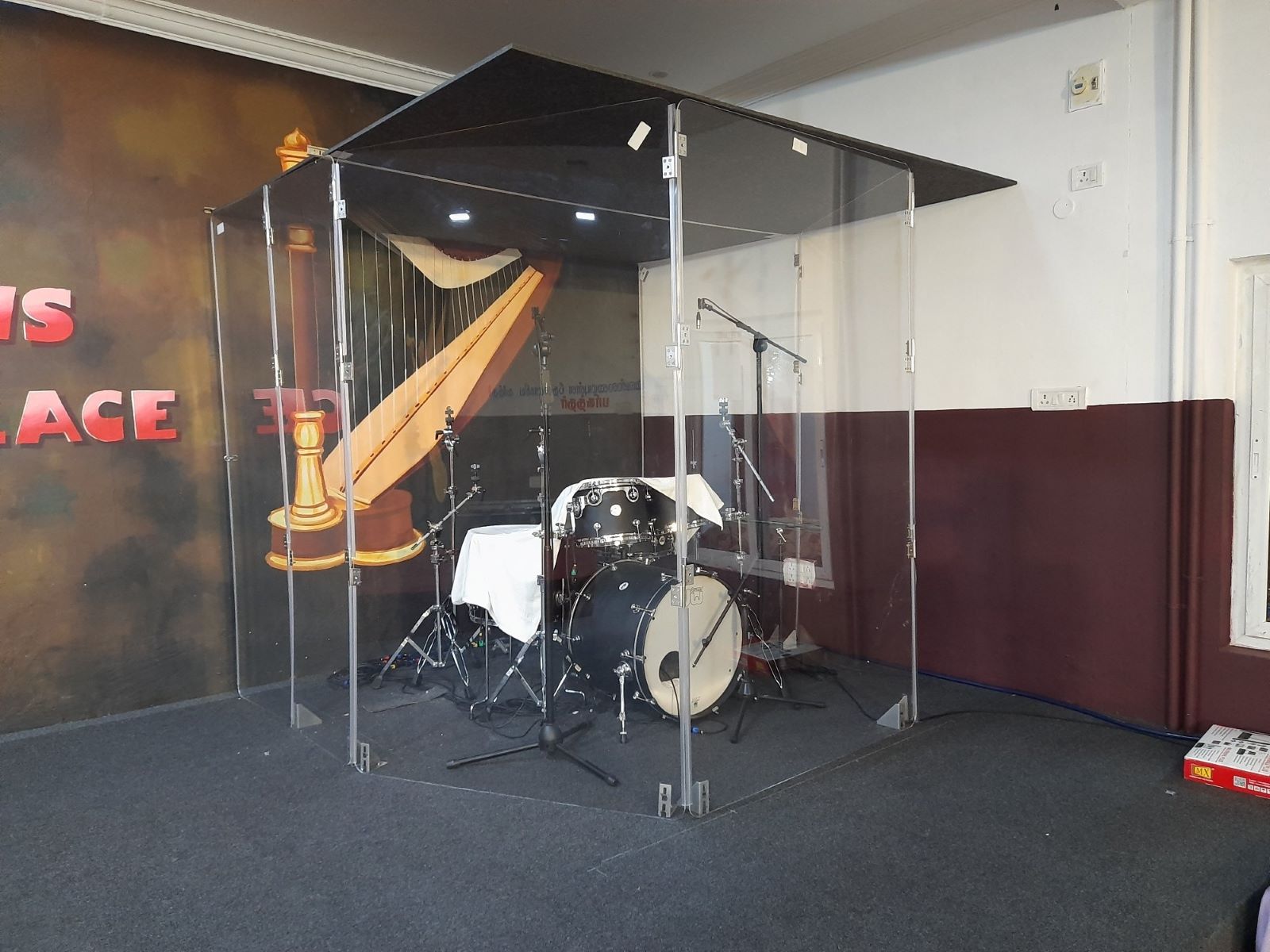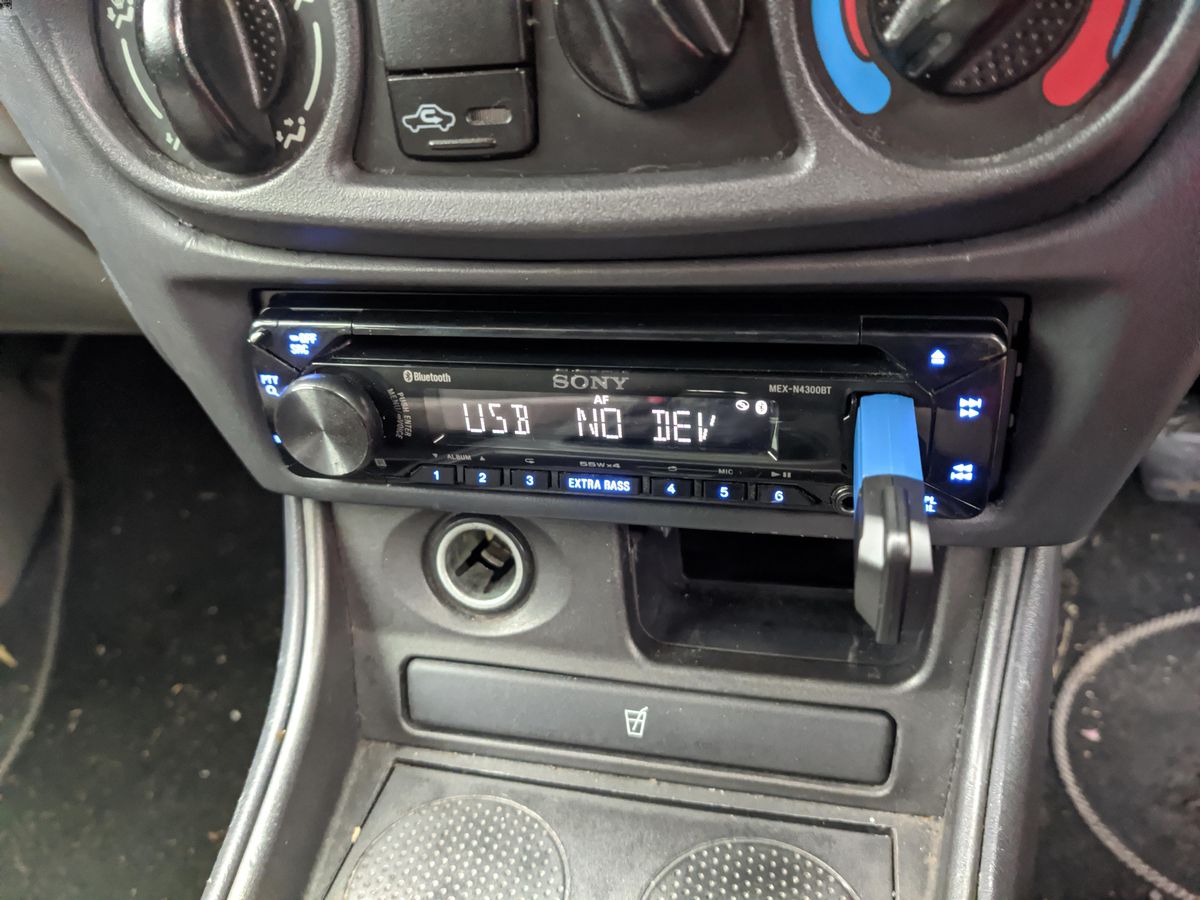Home>Instruments>Drums>Why Does The Who’s Drummer Have A Glass Shield Around His Drums?


Drums
Why Does The Who’s Drummer Have A Glass Shield Around His Drums?
Published: February 9, 2024
Discover the reason behind The Who's drummer having a glass shield around his drums and the impact of this unique setup. Learn how this innovation enhances the sound and performance of the drums. Explore the fascinating world of drums and drumming with this insightful article.
(Many of the links in this article redirect to a specific reviewed product. Your purchase of these products through affiliate links helps to generate commission for AudioLover.com, at no extra cost. Learn more)
Table of Contents
**
Introduction
**
Drums are the heartbeat of any musical performance, driving the rhythm and adding depth to the sound. However, they can also produce a significant amount of noise, which can be challenging to control, especially in live settings. This is where drum shields come into play. These transparent barriers are commonly used to contain the sound of the drums, allowing for better control of the overall sound levels during performances.
The use of drum shields has become increasingly popular in the music industry, particularly in live concert settings. They provide a means of isolating the sound of the drums, preventing bleed into other microphones on stage and allowing for better control over the mix. Additionally, they help in reducing stage volume, which can be especially important in smaller venues or when dealing with noise restrictions.
In this article, we will delve into the history of drum shields, explore the specific case of The Who's drummer and his unique use of a glass shield, and discuss the benefits of utilizing drum shields in musical performances. By the end, you will have a comprehensive understanding of the significance of drum shields in the world of music and the reasons behind their widespread adoption.
History of Drum Shields
The concept of using barriers to contain the sound of drums dates back several decades, with early iterations primarily focusing on reducing stage volume and controlling sound bleed. In the 1960s and 1970s, as live music performances grew in scale and complexity, controlling the sound of drums became a significant challenge. Sound engineers and musicians sought innovative solutions to address this issue, leading to the development of the first drum shields.
These early drum shields were often makeshift, constructed from materials such as plexiglass or wood panels. While they effectively contained the sound of the drums to some extent, they were not without limitations. The barriers were often bulky, obstructing the visibility of the drummer and creating a barrier between the audience and the performer. Despite these drawbacks, the fundamental concept of using a physical barrier to control drum sound had proven to be effective.
As the music industry continued to evolve, so did the design and functionality of drum shields. Modern drum shields are typically constructed from transparent acrylic panels, offering improved visibility while effectively containing the sound of the drums. Furthermore, advancements in materials and construction techniques have resulted in more portable and customizable drum shield options, catering to the diverse needs of musicians and sound engineers.
Today, drum shields have become an integral part of live sound reinforcement, providing a practical solution for managing drum sound in various performance environments. Their evolution from rudimentary barriers to sophisticated, transparent shields reflects the ongoing commitment to enhancing the auditory experience for both musicians and audiences.
The Who’s Drummer and His Glass Shield
When it comes to iconic rock bands, few have left a lasting impact quite like The Who. Renowned for their electrifying performances and groundbreaking musical innovations, The Who’s live shows have always been a spectacle to behold. At the heart of their sonic prowess is the legendary drummer, Keith Moon, whose explosive and dynamic playing style defined an era of rock music.
Keith Moon’s drumming was a force to be reckoned with, delivering thunderous fills and relentless energy that propelled The Who’s music to new heights. However, his powerful playing also presented a unique challenge in live settings, where controlling the volume and sound of the drums was crucial for achieving a balanced mix. To address this, The Who pioneered a groundbreaking solution – a glass shield surrounding Keith Moon’s drum kit.
The innovative use of a glass shield not only contained the sound of Keith Moon’s drums but also added a visually striking element to the band’s stage presence. The transparent barrier allowed the audience to witness the raw energy of Moon’s performance while effectively managing the volume and projection of the drum sound. This pioneering approach set a new standard for live drum reinforcement and left an indelible mark on the world of rock music.
Keith Moon’s glass shield became an iconic symbol of The Who’s live performances, capturing the imagination of audiences and fellow musicians alike. Its innovative design and practical functionality showcased the band’s commitment to pushing the boundaries of live sound engineering and performance art. The glass shield not only served as a practical solution for managing drum sound but also became a visual representation of The Who’s uncompromising dedication to sonic excellence.
Benefits of Using a Drum Shield
The utilization of a drum shield offers a myriad of benefits that significantly impact the quality of live musical performances. From enhancing sound control to improving overall stage dynamics, drum shields play a crucial role in shaping the auditory and visual experience for both musicians and audiences.
- Sound Isolation: One of the primary advantages of using a drum shield is its ability to isolate the sound of the drums, preventing excessive bleed into other microphones on stage. This isolation allows for better control over the overall sound mix, resulting in a clearer and more defined sonic presentation.
- Volume Control: Drum shields help in managing stage volume by containing the sound of the drums within a confined space. This is particularly beneficial in smaller venues or settings with noise restrictions, where controlling the overall volume is essential for a balanced and enjoyable listening experience.
- Feedback Reduction: By containing the sound of the drums, drum shields contribute to reducing the potential for feedback, especially in high-volume environments. This is crucial for maintaining clarity and preventing audio disruptions during live performances.
- Visual Enhancement: In addition to their practical benefits, drum shields can enhance the visual presentation of a live performance. Transparent barriers, such as glass shields, allow the audience to see the drummer’s technique and energy while creating a visually captivating element on stage.
- Improved Monitoring: Drum shields provide a controlled acoustic environment around the drum kit, facilitating better monitoring for the drummer and the rest of the band. This ensures that each musician can hear themselves and the overall mix clearly, leading to tighter performances.
- Flexibility and Customization: Modern drum shields offer a high degree of flexibility and customization, allowing musicians and sound engineers to tailor the barriers to specific performance requirements. This adaptability ensures that the drum shield can effectively integrate with different stage setups and musical styles.
Overall, the benefits of using a drum shield extend beyond sound management, influencing the overall quality and cohesiveness of live musical performances. By providing a means of controlling the sound of the drums while enhancing visual engagement, drum shields have become an indispensable tool for musicians and sound professionals alike.
Conclusion
In the realm of live musical performances, the use of drum shields has evolved from a practical necessity to a creative and functional element that enhances the overall sonic and visual experience. From their humble beginnings as rudimentary sound barriers to the modern, customizable shields utilized in contemporary music production, drum shields have continually shaped the way drum sound is managed in live settings.
The innovative application of a glass shield surrounding Keith Moon’s drum kit exemplifies the transformative impact of drum shields on stage dynamics and visual aesthetics. The Who’s pioneering approach not only addressed the challenge of controlling drum sound but also elevated the band’s live performances to a new level of immersive engagement for audiences.
Furthermore, the benefits of using a drum shield, including sound isolation, volume control, feedback reduction, and visual enhancement, underscore the indispensable role of these barriers in shaping the auditory and visual landscape of live music. The flexibility and customization offered by modern drum shields further demonstrate their adaptability to diverse performance environments and musical genres.
As the music industry continues to evolve, drum shields remain a vital tool for achieving optimal sound reinforcement and stage management. Their ability to provide a controlled acoustic environment while enhancing the visual impact of live performances cements their status as an essential component of modern stage production.
In conclusion, the significance of drum shields in the realm of live music cannot be understated. From their historical evolution to their practical benefits and creative applications, drum shields continue to play a pivotal role in shaping the sonic and visual landscape of live musical performances, enriching the experience for both performers and audiences alike.











